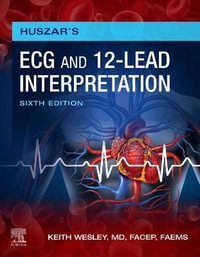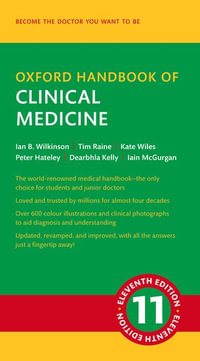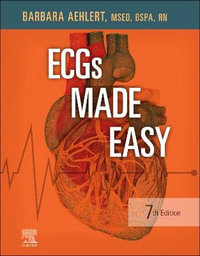| Neurobiology of Breathing Control: Where to Look and What to Look For | p. 3 |
| New Computational Models of the Respiratory Oscillator in Mammals | p. 7 |
| Is the Pattern of Breathing at Rest Chaotic? A Test of the Lyapunov Exponent | p. 15 |
| Control of Intermittent Ventilation in Lower Vertebrates: A Computer Dynamic Model | p. 21 |
| The Influence of Chemical and Mechanical Feedback on Ventilatory Pattern in a Model of the Central Respiratory Pattern Generator | p. 23 |
| Role of Acetylcholine as an Essential Neurotransmitter in Central Respiratory Drive | p. 29 |
| Effects of GABA Receptor Antagonists on the Raphe Magnus-Induced Inhibition of Bulbar and Spinal Respiratory Neural Activities in the Cat | p. 33 |
| Retrotrapezoid Nucleus (RTN) Metabotropic Glutamate Receptors and Long-Term Stimulation of Ventilatory Output: RTN Glutamate Receptors and Breathing | p. 39 |
| Expression of C-fos in the Brain Stem of Rats during Hypercapnia | p. 47 |
| Two Distinct Descending Inputs to the Cricothyroid Motoneuron in the Medulla Originating from the Amygdala and the Lateral Hypothalamic Area | p. 53 |
| Trigeminal Motor Nucleus and Pontile Respiratory Regulation | p. 59 |
| Axon Branching of Medullary Expiratory Neurons in the Sacral Spinal Cord of the Cat | p. 63 |
| Vagal Cooling and the Origin of Pulmonary Reflexes in Cats | p. 67 |
| Apneic Snout Immersion in Trained Pigs Elicits a "Diving Response" | p. 73 |
| Interaction between Expiratory Time and Inspiration in Conscious Humans | p. 77 |
| Control of the Respiratory Cycle in Conscious Humans | p. 79 |
| Intellectual Work Using a Video Game Inhibits Post Hyperventilation Hyperpnoea following Voluntary Hyperventilation while It Stimulates Breathing at Rest | p. 81 |
| Introduction to Session on the Pathophysiology of Breathing Control and Breathing: Awake and Asleep | p. 87 |
| Possible Genomic Mechanism Involved in Control Systems Responses to Hypoxia | p. 89 |
| Asynchronous Thoracoabdominal Movements in Chronic Airflow Obstruction (CAO): Active Expiration during Spontaneous Breathing in Sleep and Wakefulness | p. 95 |
| Breathing Patterns under Enflurane, Halothane, and Propofol Sedation in Humans | p. 101 |
| Multiple Modes of Periodic Breathing during Sleep | p. 105 |
| Volume History Response of Airway Resistance | p. 111 |
| Non-Stationarity of Breath-by-Breath Ventilation and Approaches to Modelling the Phenomenon | p. 117 |
| Effect of Repetitive Testing on Breathlessness | p. 123 |
| Pathophysiology of Breathing Control and Breathing Awake and Asleep: Postscript | p. 129 |
| Exercise Hyperpnea: Chairman's Introduction | p. 133 |
| Respiratory Compensation, as Evidenced by a Declining Arterial and End-Tidal PCO[subscript 2], Is Attenuated during Fast Ramp Exercise Functions | p. 137 |
| Acute Ventilatory Response to Ramp Exercise while Breathing Hypoxic, Normoxic, or Hyperoxic Air | p. 143 |
| Ventilatory Responses during Ramp Exercise in Hyperoxia | p. 147 |
| Respiratory Compensation for the Metabolic Acidosis of Severe Exercise as a Modulator of Muscular Capillary O[subscript 2]-Unloading | p. 153 |
| Effects of Base Line Changes in Work Rate on Cardiorespiratory Dynamics in Incremental and Decremental Ramp Exercise | p. 159 |
| Simulation of Asymmetrical O[subscript 2] Uptake Kinetics during Incremental and Decremental Ramp Exercise | p. 165 |
| Core Temperature Thresholds for Ventilation during Exercise: Temperature and Ventilation | p. 173 |
| Modelling the Effect of Taper on Performance, Maximal Oxygen Uptake, and the Anaerobic Threshold in Endurance Triathletes | p. 179 |
| Is the Slow Component of Exercise Vo[subscript 2] a Respiratory Adaptation to Anaerobiosis? | p. 187 |
| Effects of Age on Vo[subscript 2] Kinetics during Calf and Cycling Exercise | p. 195 |
| Vo[subscript 2] on-Transient Kinetics with a Centrally Acting Calcium Channel Blocker | p. 201 |
| Dynamics of the Pulmonary O[subscript 2] Uptake to Blood Flow Ratio (Vo[subscript 2]/Q) during and following Constant-Load Exercise | p. 207 |
| Exercise Ventilation and K[superscript +] in Patients with COPD: Positive and Negative Work | p. 213 |
| Phase-Coupling of Arterial Blood Gas Oscillations and Ventilatory Kinetics during Exercise in Humans: Phase Coupling and the Exercise Hyperpnoea | p. 219 |
| Optimization of Respiratory Pattern during Exercise | p. 225 |
| Breathing in Exercising Quadrupeds: There Ain't No Such Thing as a Free Breath! | p. 231 |
| Dynamic Chemoreceptiveness Studied in Man during Moderate Exercise Breath by Breath | p. 235 |
| CO[subscript 2] Retention during Exercise: A Role for the Carotid Chemoreceptors? | p. 239 |
| Hypoxic Exercise Does not Elicit Longterm Modulation of the Normoxic Exercise Ventilatory Response in Goats | p. 245 |
| Respiratory Responses to Hypoxia Peripheral and Central Effects: Chairman's Introductory Communication | p. 251 |
| Hypoxic Ventilatory Depression May Be Due to Central Chemoreceptor Cell Hyperpolarization | p. 257 |
| Central Hypoxic Chemoreceptors in the Ventrolateral Medulla and Caudal Hypothalamus | p. 261 |
| Ventilatory Responses to Isocapnic Hypoxia in the Eighth Decade | p. 267 |
| Hypoxic Ventilatory Response Near Normocapnia | p. 271 |
| A Comparison between the Effects of 8 Hours of Isocapnic Hypoxia and 8 Hours of Poikilocapnic Hypoxia on Respiratory Control in Humans | p. 277 |
| Individual Differences in Ventilatory and HR Responses to Progressive Hypoxia following 100% O[subscript 2] Exposure in Humans | p. 283 |
| Changes in Blood Flow in the Middle Cerebral Artery in Response to Acute Isocapnic Hypoxia in Humans | p. 287 |
| Middle Cerebral Artery Blood Flow Velocity Studied during Quiet Breathing, Reflex Hypercapnic Breathing and Volitionally Copied Eucapnic Breathing in Man: Voluntary Control of Breathing | p. 293 |
| The Effects of Hypoxia and Hyperoxia on the I/F Nature of Breath-by-Breath Ventilatory Variability | p. 297 |
| Cholinergic Dimensions to Carotid Body Chemotransduction | p. 303 |
| Gases as Chemical Messengers in the Carotid Body: Role of Nitric Oxide and Carbon Monoxide in Chemoreception | p. 309 |
| Interactive Ventilatory Effects of Carotid Body Hypoxia and Hypocapnia in the Unanesthetized Dog | p. 313 |
| The Postnatal Potentiation of Chemoreceptor Sensitivity to O[subscript 2] and CO[subscript 2] in the in Vitro Rat Carotid Body Is Blunted by Chronic Hypoxaemia: Development of Chemosensitivity | p. 317 |
| The Excitation of Carotid Body Chemoreceptors of the Cat by Potassium and Noradrenaline | p. 323 |
| Activation of Limbic Structures during CO[subscript 2]-Stimulated Breathing in Awake Man | p. 331 |
| Improvements to the PRBS Method for Measuring Ventilatory Response to CO[subscript 2] | p. 335 |
| Intralaryngeal CO[subscript 2] Reduces the Inspiratory Drive in Cats by Sensory Feedback from the Larynx | p. 341 |
| Investigation of Central CO[subscript 2]-Sensitivity around Encapnia in Awake Humans Using a Brief Hypoxic Stimulus | p. 347 |
| Central-Peripheral Ventilatory Chemoreflex Interaction in Humans | p. 351 |
| Subcellular Control of Oxygen Transport | p. 357 |
| Muscle Perfusion and Control of Breathing: Is There a Neural Link? | p. 362 |
| Index | p. 369 |
| Table of Contents provided by Blackwell. All Rights Reserved. |
























